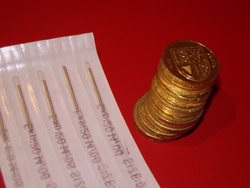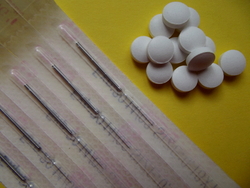Clinicians have published a report of a patient with phantom limb pain, successfully treated with acupuncture within a Swansea GP practice. The 45-year-old man was suffering pain and sensation following amputation of his forearm above the elbow twelve weeks earlier. After seven weekly acupuncture sessions on his opposite arm, he experienced complete relief of the phantom limb pain and significant improvement of the phantom sensations. He remained free of pain at follow-up after 5 months.
The author, a GP within the practice, concludes that the patient derived considerable benefit from short sessions of acupuncture. This benefit was commented on when he attended a secondary care pain control clinic which was unaware that he was having acupuncture in primary care. The clinic letter noted a dramatic improvement in his symptoms.
(Acupuncture Treatment of Phantom Limb Pain and Phantom Limb Sensation in a Primary Care Setting. Acupuncture in Medicine, on-line 6 December 2012.)



 American researchers have evaluated the usefulness of acupuncture for postoperative pain. They conducted a systematic review of the evidence, including fifteen randomised controlled trials of acupuncture versus a sham control, and found that at 8 hours and 72 hours after surgery, the acupuncture groups were using significantly less opioid painkillers (eg. codeine and morphine). Furthermore, acupuncture treatment was associated with fewer opioid-related side-effects, such as nausea, sedation, dizziness, itching and urinary retention.
American researchers have evaluated the usefulness of acupuncture for postoperative pain. They conducted a systematic review of the evidence, including fifteen randomised controlled trials of acupuncture versus a sham control, and found that at 8 hours and 72 hours after surgery, the acupuncture groups were using significantly less opioid painkillers (eg. codeine and morphine). Furthermore, acupuncture treatment was associated with fewer opioid-related side-effects, such as nausea, sedation, dizziness, itching and urinary retention.